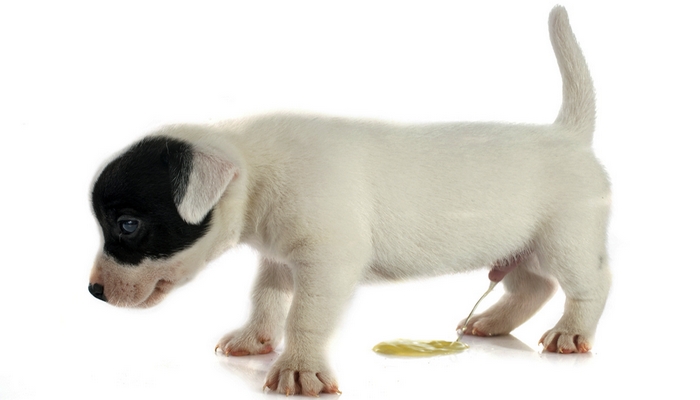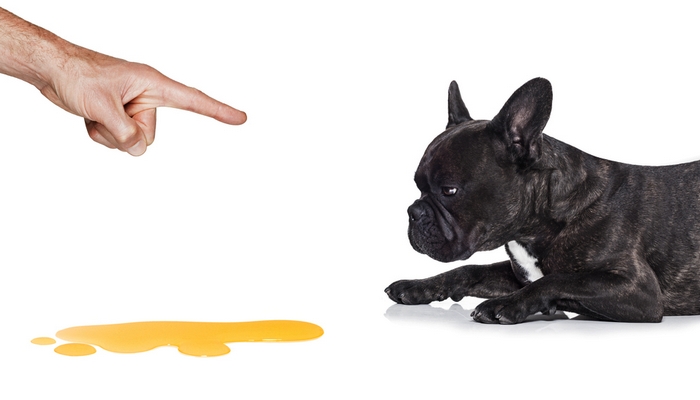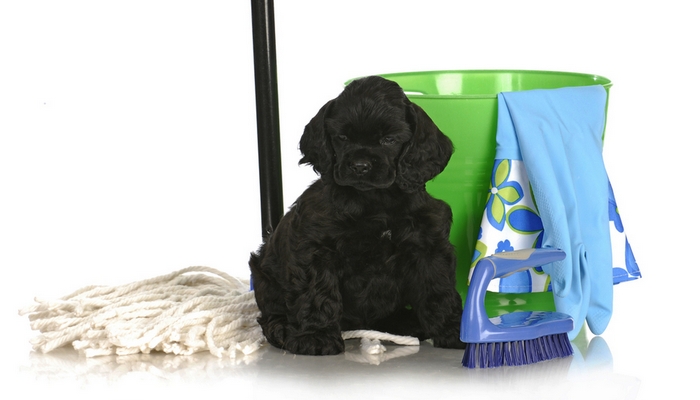Most potential puppy owners dread the thought of house training their new canine companion. If you stick to a consistent schedule, learning how to toilet train a puppy isn't hard. It'll take a lot of time and patience, but your new four-legged family member will be going potty outside in no time.
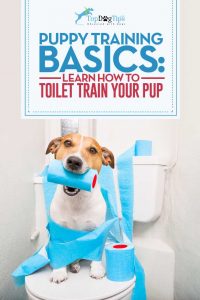 It's important to do your research and have a house training plan in place before you bring your new puppy home. You'll want to make sure you have all the supplies and a solid strategy in place so you can start the training on day one.
It's important to do your research and have a house training plan in place before you bring your new puppy home. You'll want to make sure you have all the supplies and a solid strategy in place so you can start the training on day one.
Crating your dog will be a big benefit during house training. Don't think of it as putting your dog in a cage. Crating is not a negative thing. Dogs are denning creatures by nature, and if you know how to properly crate train your pet he'll actually enjoy having his own safe space.
Dogs won't usually go to the bathroom where they sleep, which means it's unlikely that your puppy will go in his kennel (as long as he gets adequate bathroom breaks). However, you're still going to need to learn how to toilet train a puppy or he will accidents in your house.
MORE HOW-TO VIDEOS: Subscribe to Our YouTube Channel!
How To Toilet Train A Puppy Effectively: Step-by-Step Instructions
1. Take time off
I always advise that new pet owners take time off when bringing their new arrival home. Whether you're adopting a puppy or an adult dog, it's best if you're home to help him settle in for the first few days.
Learning how to toilet train a puppy will be much easier if you are with the dog at all times in the beginning. If you bring your dog home and only spend one day with him before heading back to work, you're not going to have enough time to set up a routine and get your Fido on a consistent schedule.
Not only will being home with your puppy be beneficial for your potty training efforts, it will also help to build the bond between the two of you. Your puppy needs someone at home to help ease the transition for him, and that person should be you!
USEFUL: How To Puppy Proof Your Home – Important Tips On What To Do
2. Create a consistent schedule
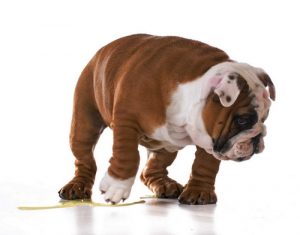 This is the most crucial part of learning how to toilet train a puppy. The more consistent you can keep your pet's schedule, the easier it will be to anticipate when he needs to use the bathroom.
This is the most crucial part of learning how to toilet train a puppy. The more consistent you can keep your pet's schedule, the easier it will be to anticipate when he needs to use the bathroom.
Feeding and watering your pet on a schedule will allow you to plan bathroom breaks. This may not be extremely important while you're home, but it will be a huge asset when you go back to work.
It's best to begin from the first moment you bring your new pooch home. Set a feeding schedule, and stick with it.
If your dog doesn't eat when you set food down, don't worry. When he's hungry he'll eat.
Set feeding times in the morning and at night and offer food during those times only. If you leave the food on the floor until your puppy eats it, it could throw your schedule off by hours. This will leave his bathroom schedule up in the air, and you'll never be able to get consistency in your routine.
Of course, you want to leave water out for your pup at all times during the day, but monitor his drinking. You'll also want to cut down his access to water at night. About 2 hours before bedtime, pick up his water bowl. This will ensure easier night time potty training.
Being consistent also includes bringing your puppy to the same spot outside each time you take him for a bathroom break. He'll begin to learn that this is the place where you want him to go. Once he is completely toilet trained, you can begin allowing him to wander around and find his own spot.
TRY THESE: Comparing Best Puppy Potty Training Pads
3. Observe your puppy
The best tool when learning how to toilet train a puppy is your own observations. By taking a few days off to spend with your puppy, you'll get to know him and the silent cues that he gives when he needs something.
You'll learn how he acts when he's hungry or sleepy. You'll also learn what he does when he needs to use the bathroom. Common signs that your pet needs to relieve himself include:
- pacing
- sniffing around
- hiding
- whining
- waiting by the door
All dogs are different, so your pup might show that he needs to go in another way. Spend enough time observing him, and you'll pick up on his silent cues in no time.
VIDEO GUIDE: How To Introduce Your Puppy To An Existing Dog
4. Do not use punishment
 You never want to use punishment when your puppy has an accident in the house.
You never want to use punishment when your puppy has an accident in the house.
Putting his nose near the mess and spanking him will only reinforce the idea that you don't want him to go to the bathroom.
Your dog will not understand that you're angry because he went in the house; he'll think that you are angry because he went to the bathroom.
Instead of punishing your dog when he does something you don't like, reward him for doing what you do like. Giving him praise and treats when he uses the bathroom outside will reinforce the idea that you want him to go outdoors instead of inside.
If you do happen to catch your dog in the act of using the bathroom inside, try to startle him. This will make him stop. A great way to startle him is by clapping your hands. This will make him stop in the middle of his action, and you can scoop him up and bring him outdoors to finish.
5. Thoroughly clean up after accidents
When discussing how to toilet train a puppy, it's important to talk about cleaning the mess thoroughly. If your dog can still smell the odor of his urine on your floors, he'll be more apt to want to mark in the same place.
You can purchase special cleaning solutions that are specifically formulated to remove the smell of urine from carpeting. Using one of these products may cost a little bit more than your regular cleaner, but it will break down the urine and completely remove the smell.
Remember that just because you can't smell the odor, your dog may still be able to. If you find that your puppy tends to always go in the spot in your home, try using a urine neutralizer on the area. Chances are, your puppy is still picking up a scent and trying to mark over it.
WATCH NEXT: How To Stop A Puppy From Biting and Why You Should


